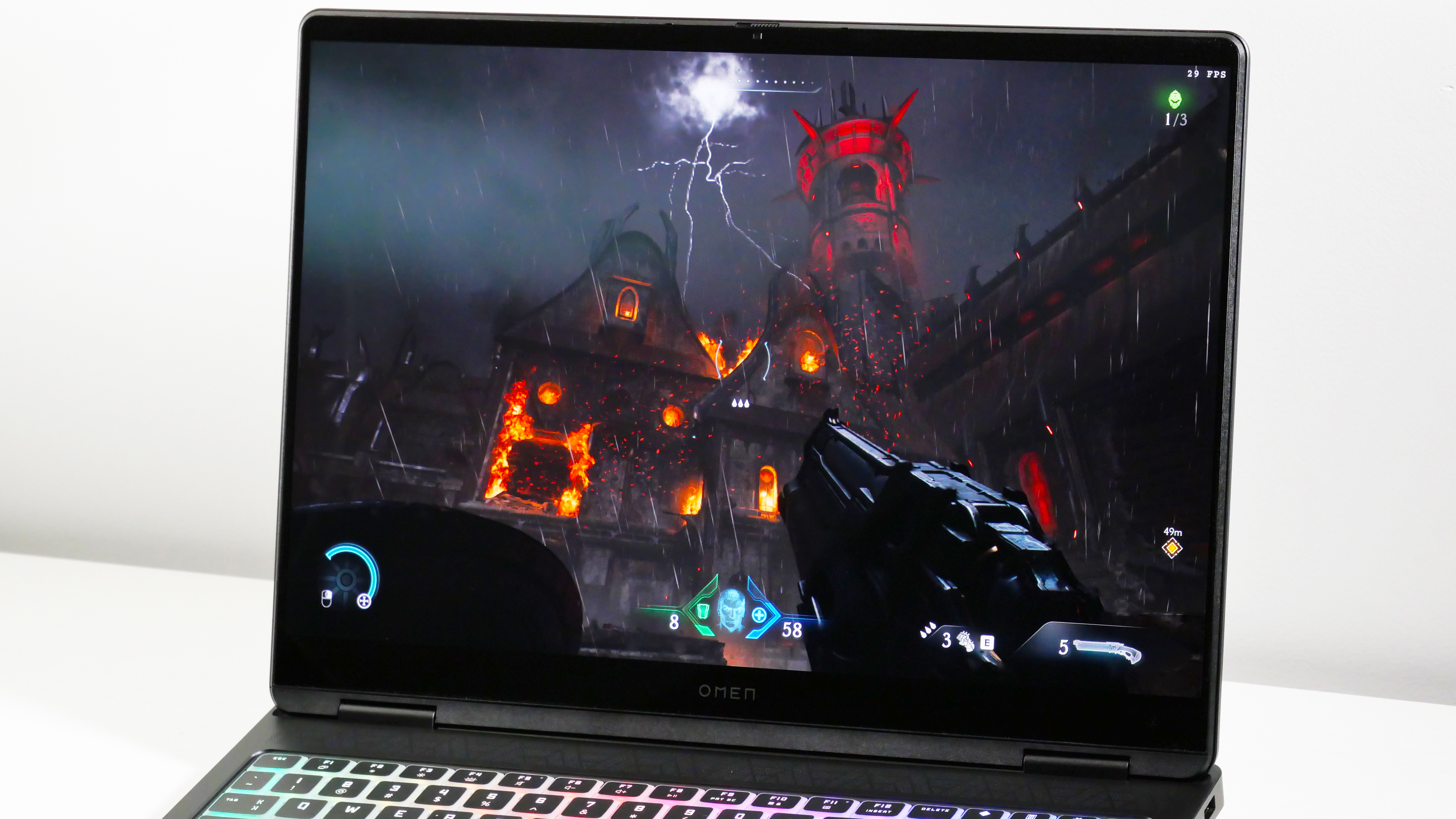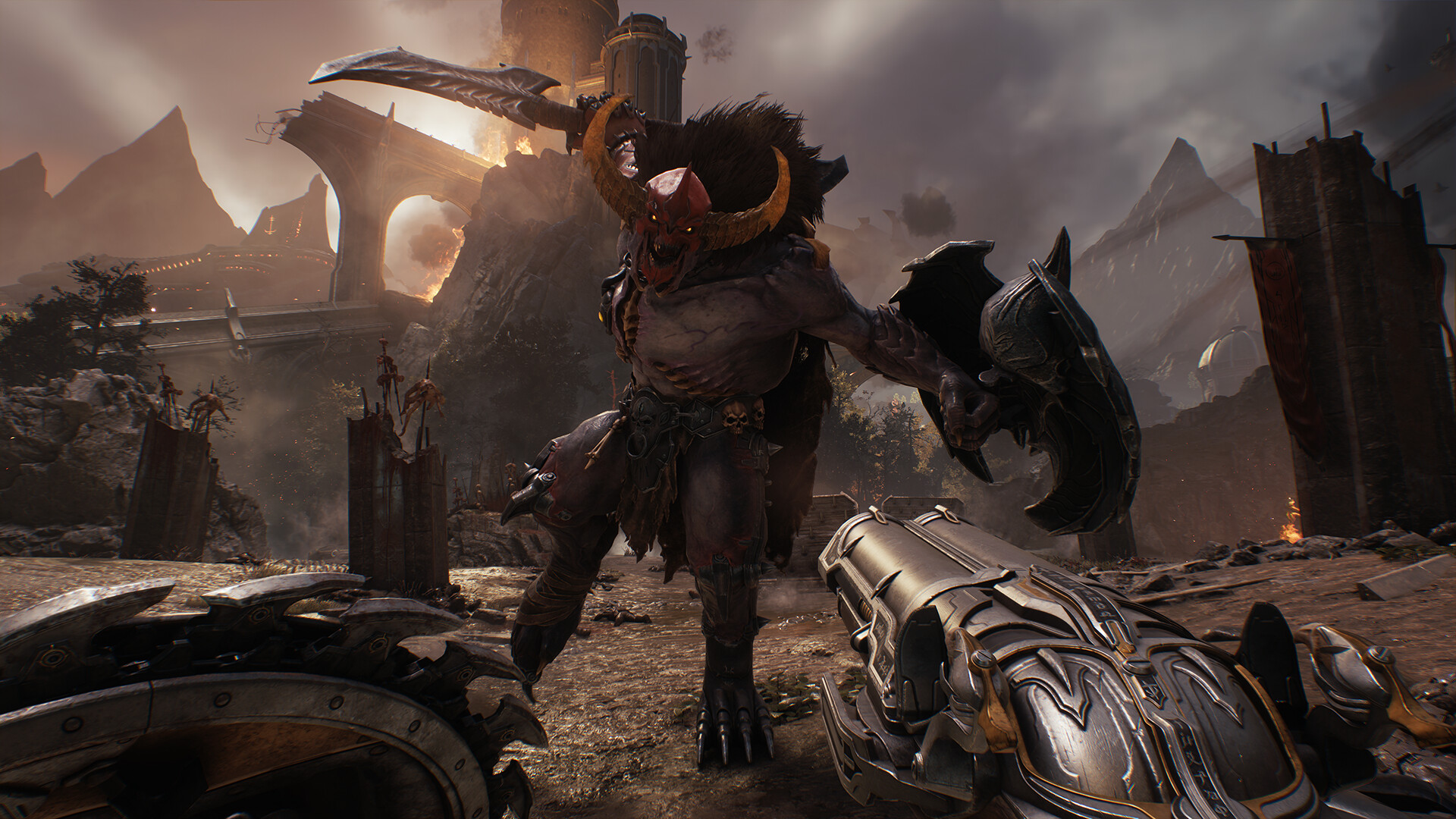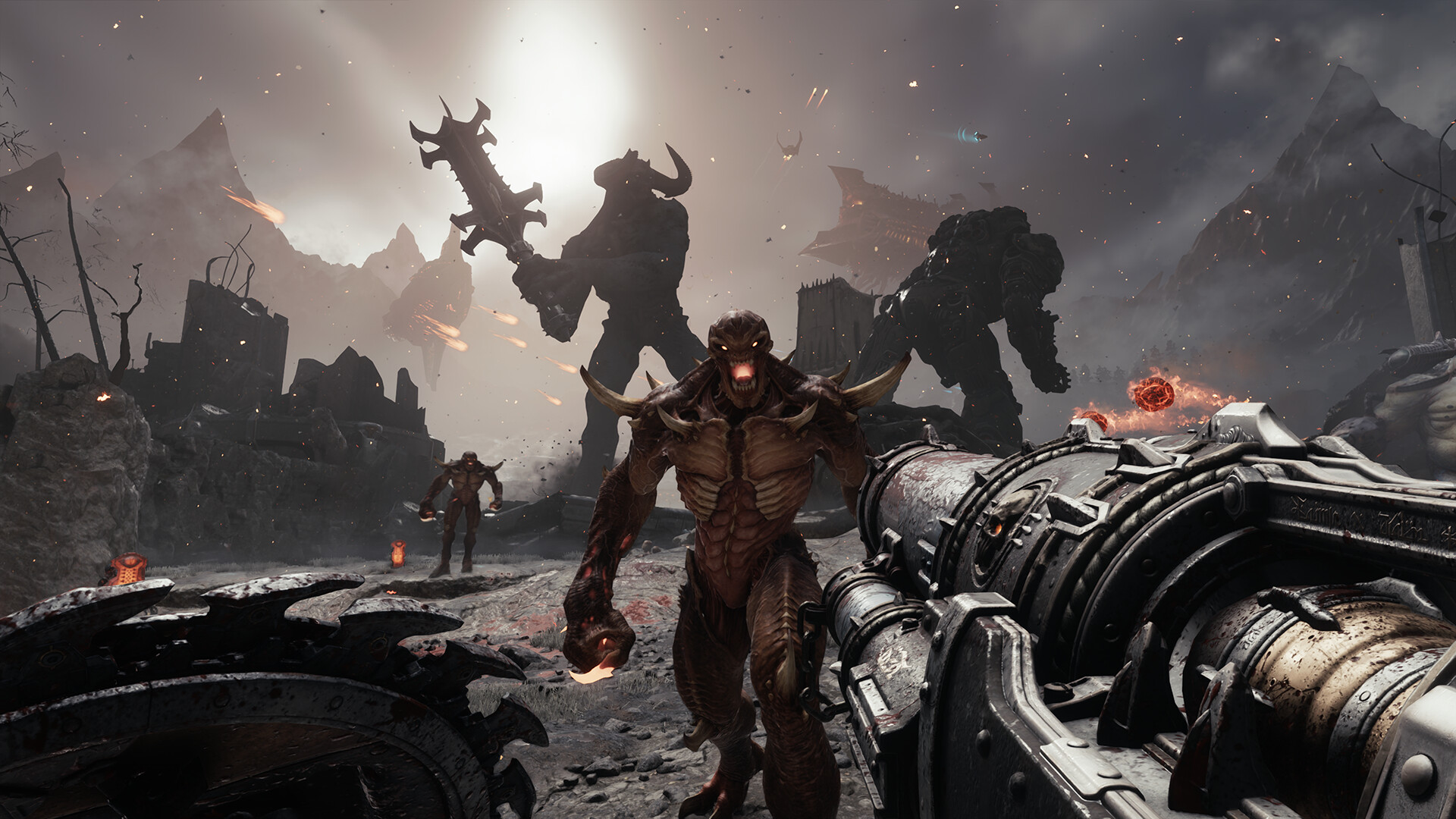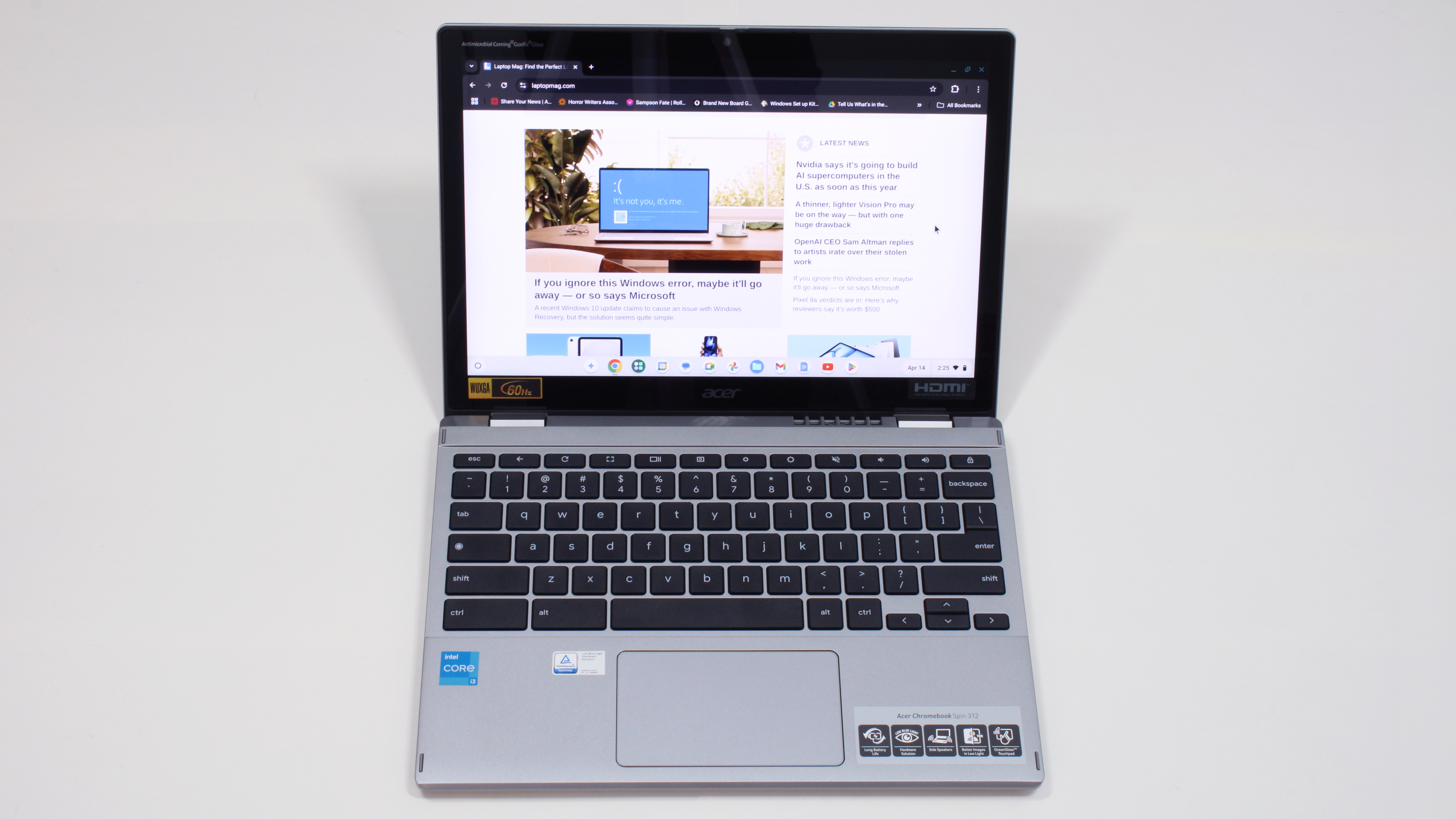'Doom: The Dark Ages' is my favorite kind of nightmare — this is how it runs on an RTX 5090 gaming laptop
Did someone call for a Slayer?

I got the chance to jump into Doom: The Dark Ages on an RTX 5090 gaming laptop, and let me tell you, it feels good blasting away demons in this high-fidelity, beautiful nightmare.
Doom: The Dark Ages is the latest entry in the Doom reboot franchise. It takes place before Doom (2016) and Doom Eternal, at a time when the Slayer was bound by gods and kings to combat the forces of hell. It’s like if medieval fantasy and Doom had a baby, and I love it (insert sob emoji here).
I played Doom: The Dark Ages on an HP Omen Max 16 outfitted with an Intel Core Ultra 9 275HX processor, an Nvidia GeForce RTX 5090 24GB GPU, 32GB of RAM, and a 16-inch, 2560 x 1600, 240Hz, OLED display.
Here’s how it ran.
Slaying my Nightmare

I wasted no time jumping into the hardest difficulty… Well, not the hardest. I don't have it in me to get my whole save wiped in Pandemonium or Ultra-Nightmare, so I went with regular ol’ Nightmare. However, for the graphic settings, I pulled that level like Kronk all the way to Ultra Nightmare, 2560 x 1600, and that applies to all of the following tests below.
Now, Nvidia’s RTX 5090 and all of its RTX 50-series siblings boast DLSS 4, which is a super sampling technology that boosts visuals and performance. I’ve been somewhat critical of the technology due to my fear of developers relying on Multi-Frame Generation too heavily in order to optimize their performance (ahem, Monster Hunter Wilds). So naturally, the first thing I did was turn off all of that.
I started tearing through demons in the Village of Khalim with the upscaler set to its default, TAA (there’s no option to turn off upscaling). After Oblivion: Remastered scorned me with its sub-60 fps performance, I had my doubts that the RTX 5090 could pull through. But to Nvidia’s credit, and id Software’s for optimizing their game so well, I got a sweet 85 fps. Getting above 60 fps on a laptop with a 1600p display is ideal.
Sign up to receive The Snapshot, a free special dispatch from Laptop Mag, in your inbox.
However, I do like playing with the DLSS 4 upscaler, especially when set to DLAA, which maintains the native resolution while also enhancing the visuals. I expected the performance to be about the same as TAA or maybe better, but when I thrashed some devils with my new power gauntlet, it came back with 50 fps. It’s not terrible, but it’s not 60 fps.

This is when I turned to Frame Generation (2x) and Multi-Frame Generation (4x). This technology uses AI to create frames for every true frame, 2x being one for one and 4x being one for three. It’s pretty cool in theory, but it has its issues, like occasional fuzziness or artifacting. I didn't notice anything egregious in Doom: The Dark Ages, but you may have a different experience than I.
I leapt back into the fray, doubling up on my aggression (turning on 2x FG), and I broke demon spines at 82 fps. That's a more comfortable frame rate, but I'm surprised FG couldn't push it further than TAA. But of course, cranking it up to MFG (4x), I saw a blistering 140 fps.
Using DLAA provides the most optimal visuals outside of raw performance. However, if you want to make use of that high refresh rate display, set the DLSS to Ultra Performance.
I bounced across the battlefield like my child when I say we’re going outside, which got me a smooth 131 fps. And that's without frame generation. Popping on FG (2x) bumped me up to 178 fps. Then, meleeing my way to MFG (4x), the RTX 5090 blasted through the Omen’s 240Hz display with a score of 260 fps.
It’s nice to see that id Software took care in optimizing the performance of Doom: The Dark Ages. Some beloved AAA games have failed to present respectable frames at max settings even on the most powerful hardware to date.
Right now, id Software’s minimum spec requirement for Doom: The Dark Ages is an RTX 2060 Super or AMD RX 6600 GPU. That’s a little higher than I’d like it to be, but it feels honest considering the performance I got.
But overall, if you’re interested in getting one of the best gaming laptops, you can expect some slayer performance.
Settings | Frames per second |
|---|---|
TAA | 85 fps |
DLSS: DLAA | 50 fps |
DLSS: DLAA, FG (2x) | 82 fps |
DLSS: DLAA, MFG (4x) | 140 fps |
DLSS: Ultra Performance | 131 fps |
DLSS: Ultra Performance, FG (2x) | 178 fps |
DLSS: Ultra Performance, MFG (4x) | 260 fps |

Rami Tabari is the Reviews Editor for Laptop Mag. He reviews every shape and form of a laptop as well as all sorts of cool tech. You can find him sitting at his desk surrounded by a hoarder's dream of laptops, and when he navigates his way out to civilization, you can catch him watching really bad anime or playing some kind of painfully difficult game. He’s the best at every game and he just doesn’t lose. That’s why you’ll occasionally catch his byline attached to the latest Souls-like challenge.
